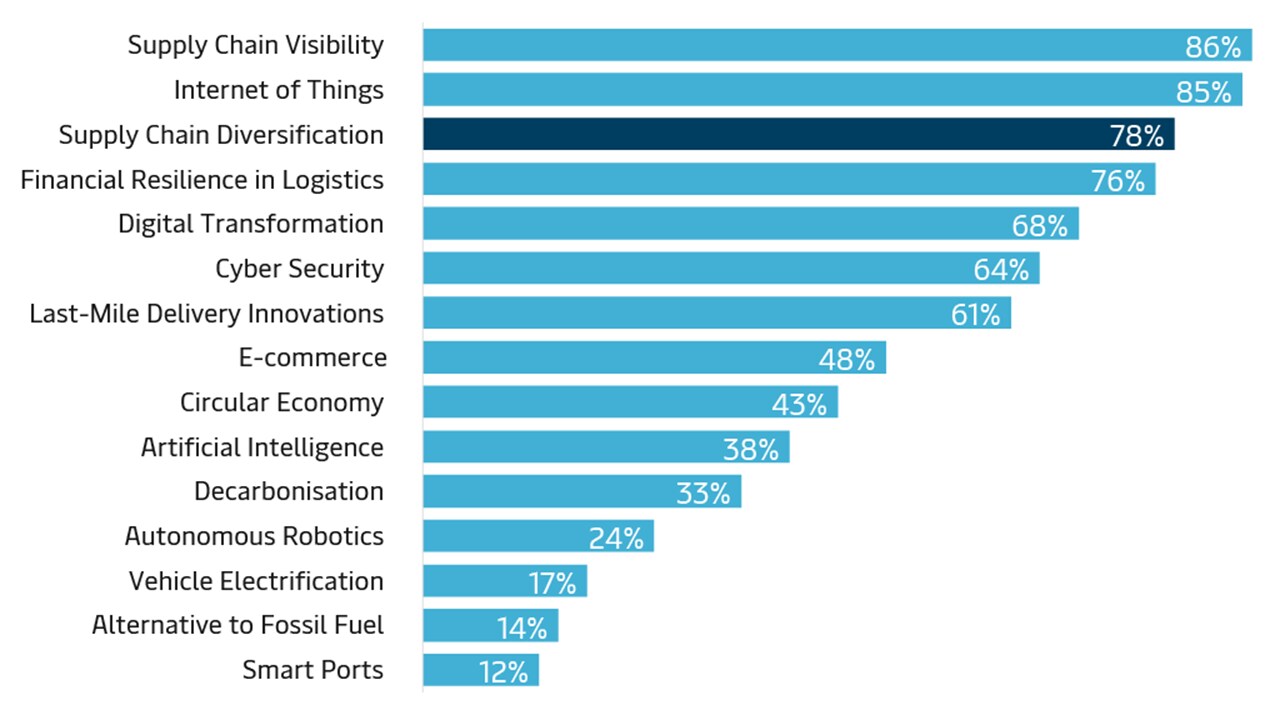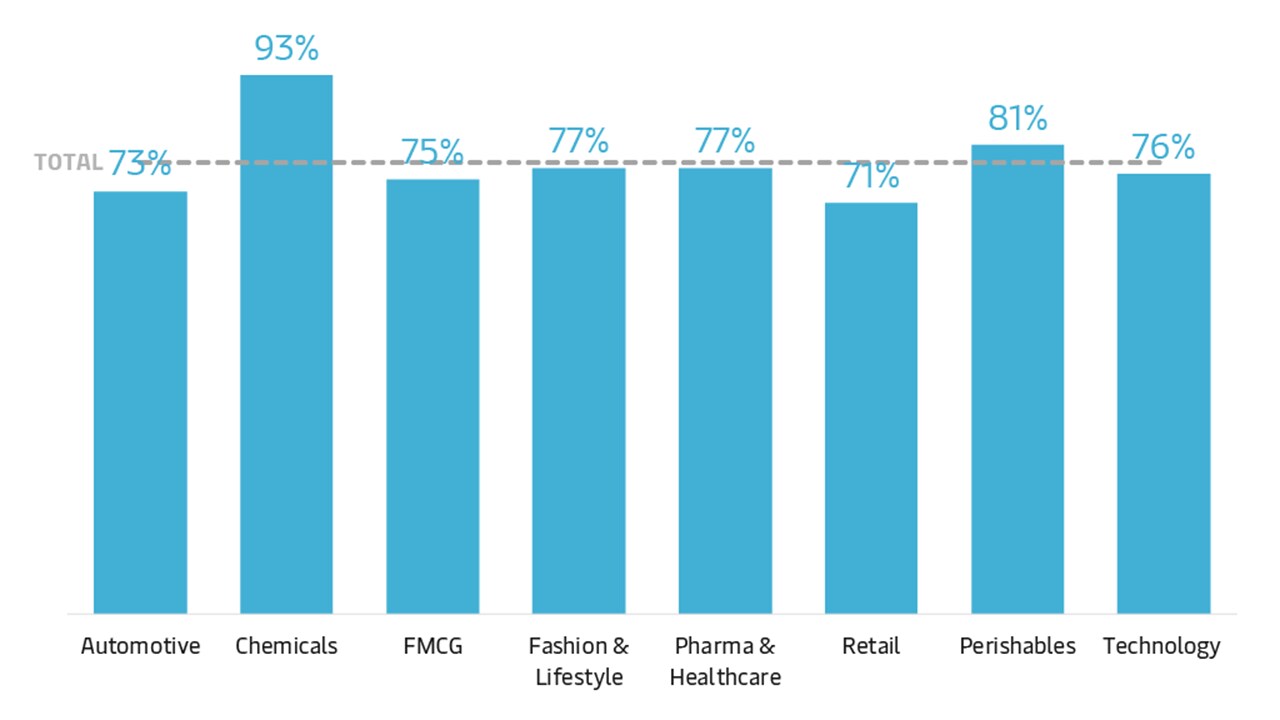
Supply Chain Diversification
Increasing resilience by adopting multi-sourcing and multi-shoring strategies to reduce reliance on single suppliers or regions.
Theme: Resilience
Industry Adaption: ⚫ ⚫ ⚫ ⚫ Industry Standard
Impact: ⚫ ⚫ ⚫ High
A 2024 Maersk survey shows that decision makers rank Supply Chain Diversification 3rd out of the top 15 trends.
In recent years, global supply chains have faced growing pressures from geopolitical tensions, technological advancements, and climate disruptions. Supply chain diversification strengthens resilience by reducing reliance on single suppliers or regions through logistics strategies, such as multi-sourcing and multi-shoring. Diversification also includes strategies like having production flexibility to meet shifting demands, using diverse transport modes to avoid disruptions, and implementing inventory diversification to maintain supply continuity. Together, these measures enhance adaptability and stability in an unpredictable global environment.
Supply chain diversification is already an industry standard, evidenced by steady patent activity with 400 patents filed between 2019 and 2023 and niche startup involvement over the past decade. While innovation in this area remains moderate, the declining number of C-Suite mentions – from 7,000 in 2022 to 1,800 in 2024 – reflects the trend has now become established industry practice.
5+
thereof groundbreaking: 10+
2024: 1,880+

Explore the Global Logistics Trends of 2025
Dive deep into the Top 10 trends shaping the industry today as well as valuable insights to help you build a more resilient supply chain.
Top 15 Trends
Share of Key Decision Makers, who consider the trend to be relevant for their company’s logistics

Supply Chain Diversification – Relevance by Industry

What are the opportunities?
Diversification reduces dependency on single suppliers, enabling companies to respond quickly to disruptions. Global supplier networks across regions improve operational balance, while multi-sourcing promotes agility and continuity. Together, these strategies can build resilience to meet the challenges of a dynamic global marketplace.
What are the challenges?
Diversification brings logistical and cost challenges. Managing a larger network increases complexity, while achieving visibility across different geographies remains difficult. Companies must also balance short-term with long-term stability, often at increased cost. Industries that rely on extensive supplier networks face additional risks such as reduced transport efficiency.
Sources:
- Survey among 500+ global logistics decision makers across various industries, conducted by Statista for Maersk (Q4 2024).
- In-depth interviews with global industry experts, academia, and futurists.
- Unstructured web sources with more than 10,000 search term permutations using AI.
- Curated data from startup databases, patent databases, and analysis tools, as well as Semantic Scholar.



